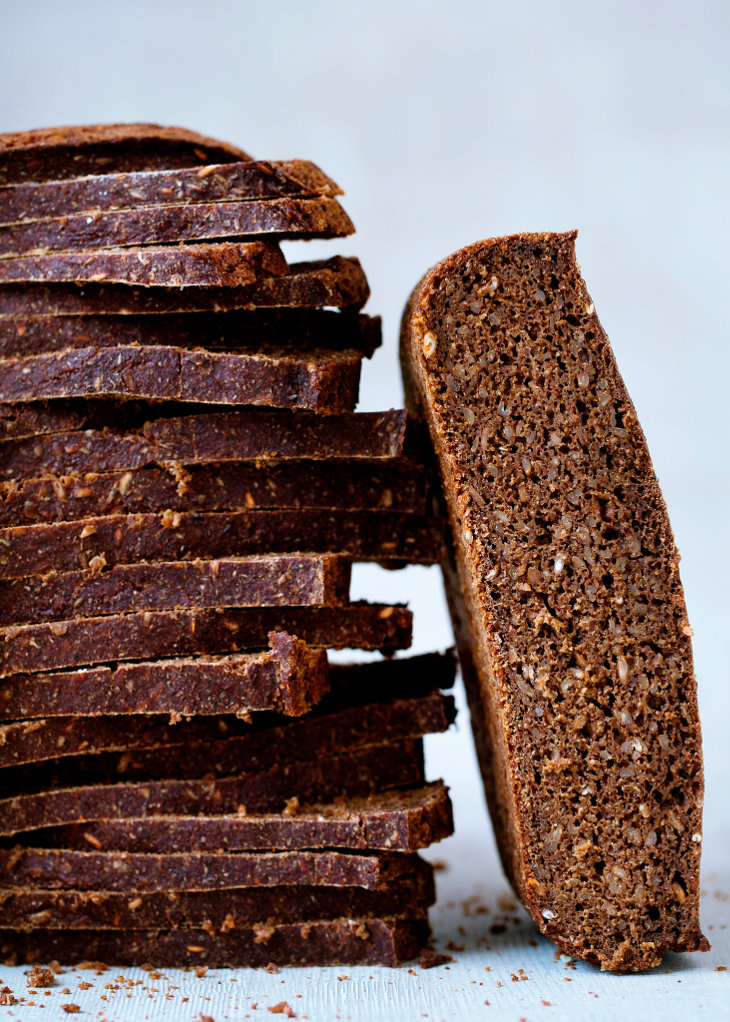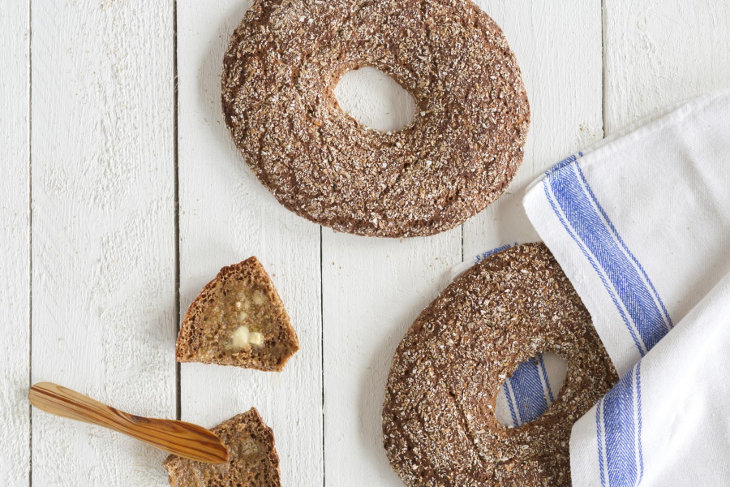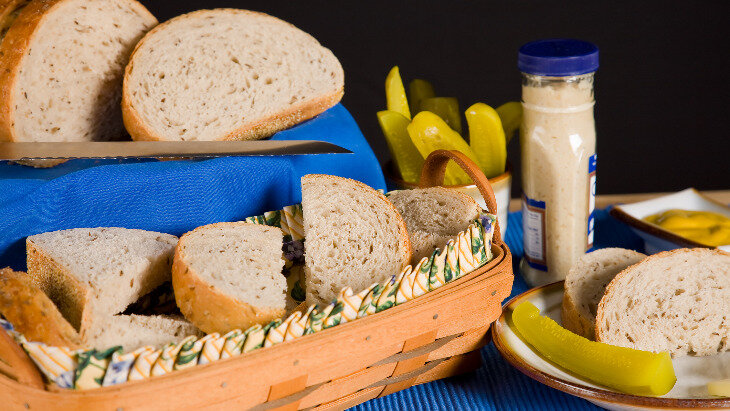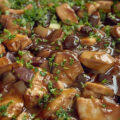To me, rye bread is synonymous with trips to the deli with my Zaide. The delicious pastrami, corned beef, and tender brisket spread neatly on the display window. The crisp pickles, creamy coleslaw, and warm smiles of Jews enjoying the nostalgic foods they grew up on. The deli is a place that evokes as many memories as it does flavors.
The aroma of warm rye bread transports me immediately to childhood, staring in awe at the master meat-smith thinly slicing pastrami on a mustard coated slice of rye. While I've been a vegetarian for the past eight years, those fond recollections will never leave me.
The History
The first recorded mentions of rye cultivation can be found in Roman naturalist Pliny the Elder's diaries, which date back to around c. 77 CE. He commented that it was “a very poor food and good only to avert starvation.”
Unlike the smooth, faintly tart loaf we are used to, the original rye breads from Scandinavia and other parts of Northern Europe are thick, nutty, and rich with a caramelized crust and tart center.

They range from dark brown bread, most commonly found in Russia and Poland, to the spicy and fragrant renditions in Nordic cuisine. The unique ability of the rye grain to survive at ice cold temperatures made it one of the most important grains in Europe.
Rye is a close relative of wheat and barley. It has a dark and rich flavor and is filled to the brim with vitamins and nutrients. Rye started to be grown in Europe during the Middle Ages, where it was used to produce both bread and alcohol.
In fact, before modern agriculture and technological advances made wheat readily available, rye was the best (and sometimes only) option for bread baking in most Jewish communities.
The Taste
Rye bread is made from rye flour, which is a staple grain in Eastern Europe and Russia. The grain was able to grow in the poor soil and harsh climates of the region, making it a reliable source of sustenance for Jewish communities. It also has a unique, tangy flavor that sets it apart from other types of bread.
Jewish rye bread was made from a special sour rye starter called roshtshine which gives it its unique color and texture. And when paired with caraway seeds makes for the classic Jewish rye bread loaf we know today.
Traditionally all-rye breads such as pumpernickel require a slow rise and a hot, steamy bake. In fact, a common baking practice in Iceland involved sealing and baking the loaf underground, using the warm steam from local hot springs.
The Fall
Over time, rye, despite its status as a hardy and easy to grow grain, was slowly forgotten by many. In the United States and Europe, soft white breads had become the ideal. Bakers were no longer interested in creating the darker loaves that had characterized Scandinavia and Norway in the past.
Both commercial and craft bakers abandoned the heavy brown loaves that had evolved over centuries and began baking French brioche and baguettes and American-style white bread. Though lacking the density and heartiness of rye, white breads made for easy sandwiches and made rye bread more and more irrelevant.
Rye became a thing of the past that had been superseded by the processed and fluffy white loaves desired by a consumerist culture that no longer wanted their breads to serve as any more than a vehicle for condiments, cheeses, and meats.
As the torch had been passed, rye became but a forgotten relic of a long ago time where one could find Jews in shtetls and farmers in fields.
The Come Back
In recent years, however, there's been a resurgence of interest in traditional Jewish foods and traditional bread baking, and rye bread is no exception. Many artisanal bakeries and delis are now making their own versions of the bread, using traditional methods and quality ingredients. They are experimenting with different variations of the bread, such as adding seeds, nuts, or even unique flours to create new flavors and textures.
A famous variation on the classic preparation of the bread, reikäleipä. Voted Finland’s national food for the centenary celebrations of the country’s independence. Reikäleipä is a flat round rye bread with a hole in the middle that is traditionally placed on poles suspended under the ceiling.

Learn more in The root of Finnish rye bread
Bars and restaurants in Europe and the U.S. have taken it upon themselves to reinvent the classic bread and transform it into unique creations such as a sweet rye pound cake, crisp fried rye crackers, and even rye rigatoni with duck and fennel that can be found on the menus of the most up to date hipster joints.
But as rye makes a resurgence in foodie circles it is important to remember that rye bread was never forgotten by the Jewish people. Rye bread to us isn't just a part of Jewish history – it's also an integral part of what it means to be Jewish. To use what little we have to our advantage and make the most of what we are given.
So next time you take a bite of rye bread, remember that it represents centuries of tradition, culture, and memories. And if you're ever feeling nostalgic for the flavors of your childhood, just take a sniff of a warm, freshly baked loaf of rye bread, and let it all flood back.
Want to make your own Jewish rye bread? Try our recipe here.















